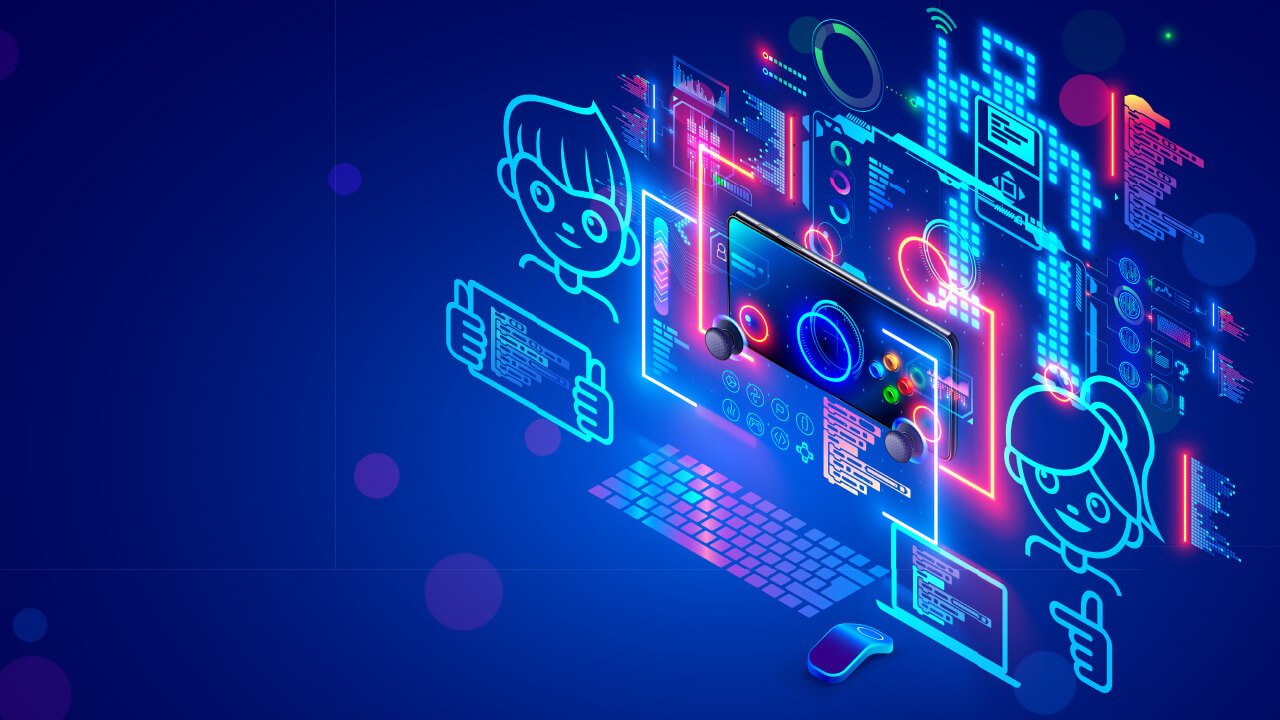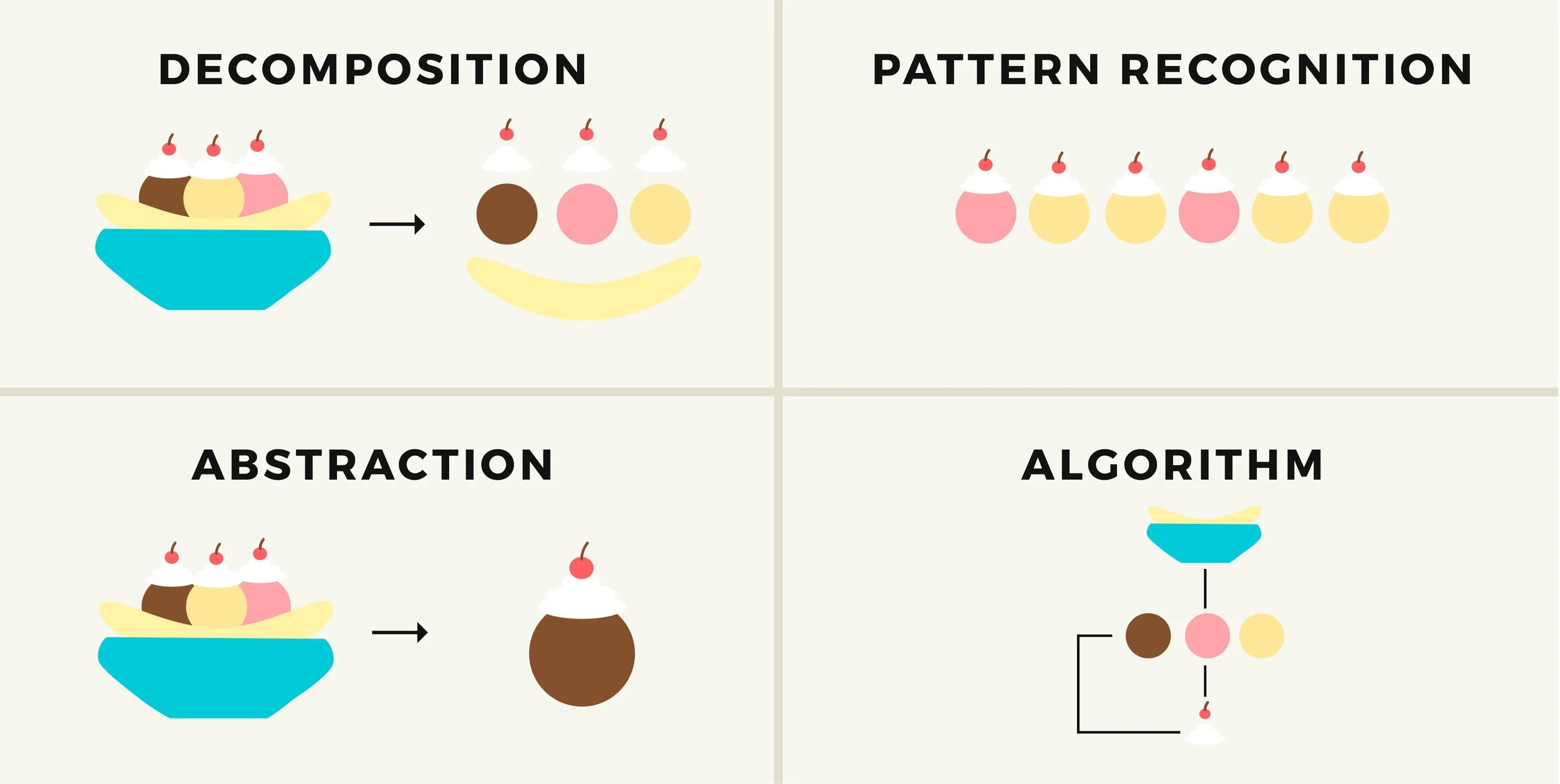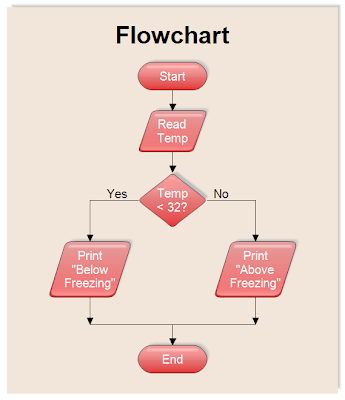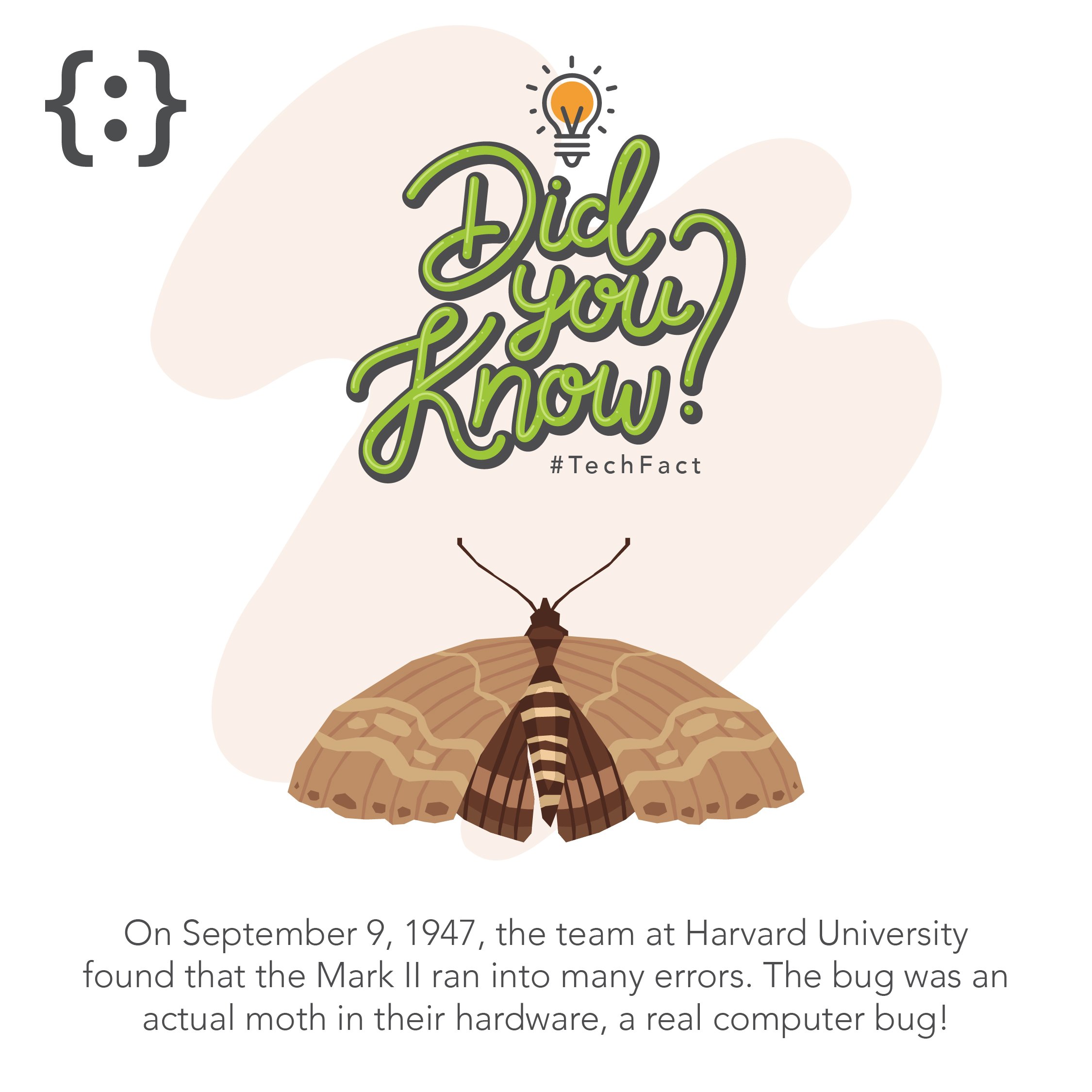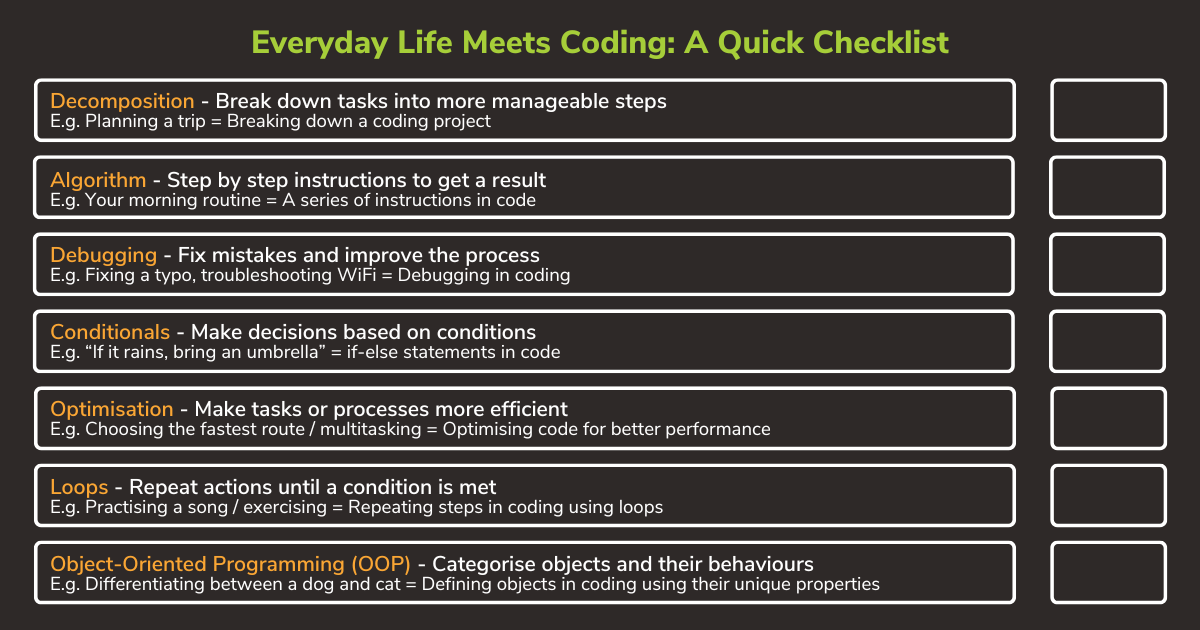#CodingLabParenting: Decode Your Coder: Speak Their Language, Starting at Home
Everyone has a coder in them - even you!
Raising a coder doesn’t start with a laptop—it starts at home.
When you hear words like “debugging,” “algorithms,” or “loops,” it might sound like a foreign language. But what if we told you that as a parent, you’ve been thinking like a coder all along?
From planning birthday parties to troubleshooting daily hiccups, the way you approach problems mirrors the very logic we teach in programming. In this blog, we’ll show you how everyday parenting tasks align with key coding concepts—and how your child can learn from your example!
Decomposition – Breaking Down a Complex Task
In coding, large projects are often broken into smaller, independent tasks. This makes them easier to manage and allows different team members to work on separate parts efficiently. For example, developing a video game involves designing levels, characters, music, and mechanics—each handled separately before being combined into a final product.
In life, we decompose tasks all the time! Planning a surprise party? Someone sends out invitations, another orders food, and someone else handles decorations. By breaking it down, the task becomes more manageable—just like in coding!
Computational Thinking is an important skill used in programming (and applicable to many other fields!), and consists of these 4 key pillars. Read more here!
Algorithms – Step-by-Step Instructions
In coding, algorithms are sets of instructions that tell a computer exactly what to do. Whether it’s sorting a list alphabetically or recommending your next YouTube video, algorithms power much of the digital world.
In life, we follow algorithms daily! Your morning routine—waking up, brushing your teeth, making breakfast—is an algorithm. So is following a recipe or building IKEA furniture using an instruction manual.
Debugging – Fixing Mistakes
In coding, bugs (errors) are inevitable. Debugging—the process of finding and fixing mistakes—is a crucial part of programming. Coders spend more time troubleshooting than actually writing code!
In life, we "debug" whenever we correct something. Fixing a spelling error, troubleshooting a Wi-Fi issue, or tidying up a messy room are all real-life examples of debugging!
Conditionals – Making Decisions Based on Conditions
Here is a flowchart of how we might code a program to print different text depending on the temperature (conditionals)!
In coding, conditionals allow programs to make decisions. If a condition is met, one action occurs; if not, a different action happens. For example, entering the correct passcode unlocks your phone, while an incorrect one keeps it locked.
In life, we use conditionals constantly. If you're hungry, you eat. If your child scores an A, they get a reward. If it’s raining, you grab an umbrella. These everyday decisions mirror coding logic!
Optimisation – Making Things More Efficient
In coding, there are often multiple ways to write a program that achieve the same result. Optimisation is the process of making the code run faster or using fewer resources. Even a tiny improvement can have a big impact in the computing world.
In life, we optimise all the time! We choose the fastest MRT route, find the best shopping deals, or multitask to save time. Efficiency is key in both coding and daily life.
Loops – Repeating Actions Until a Condition is Met
In coding, loops allow a program to repeat actions automatically. For example, a program counting the number of words in a book uses a loop to check every word until it reaches the end.
Did you know that the term ‘bug’ came about due to this? Read our Techtivities blog to find out more #TechFacts!
In life, we use loops naturally. Practicing a song until you master it, repeating exercises at the gym, or playing rounds in a sports game—these are all loops in action!
Object-Oriented Programming – Categorizing Objects by Attributes
In coding, Object-Oriented Programming (OOP) helps organize code by defining objects and their behaviors. In a video game, a player character moves and interacts, while an item can be picked up and used—each requiring different programming logic.
In life, objects have unique traits too! A dog and a cat are both animals but make different sounds. A tennis ball and a bowling ball are both round, but one bounces while the other doesn’t. Recognising these differences is the essence of OOP!
Want to see if you are practising coding concepts in your everyday life? Take a look at this checklist here! 👆
So the next time your child writes a line of code or builds an app in class, take a moment to smile—you’ve been modelling the mindset of a coder from the very beginning.
Parenting is full of decomposition, debugging, conditionals, and loops. You’re more equipped than you think. After all, the best coders often start by watching the greatest problem-solvers they know: their parents.
Coding isn’t just for computer scientists; it’s a way of thinking that helps us solve problems efficiently in everyday life. So why not take it a step further? Explore the world of programming today!

